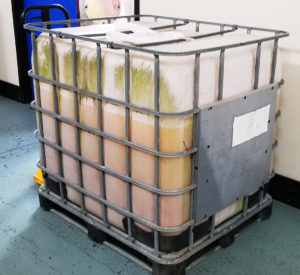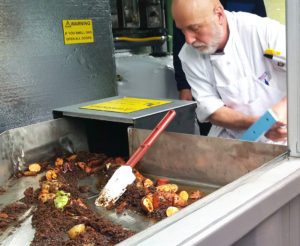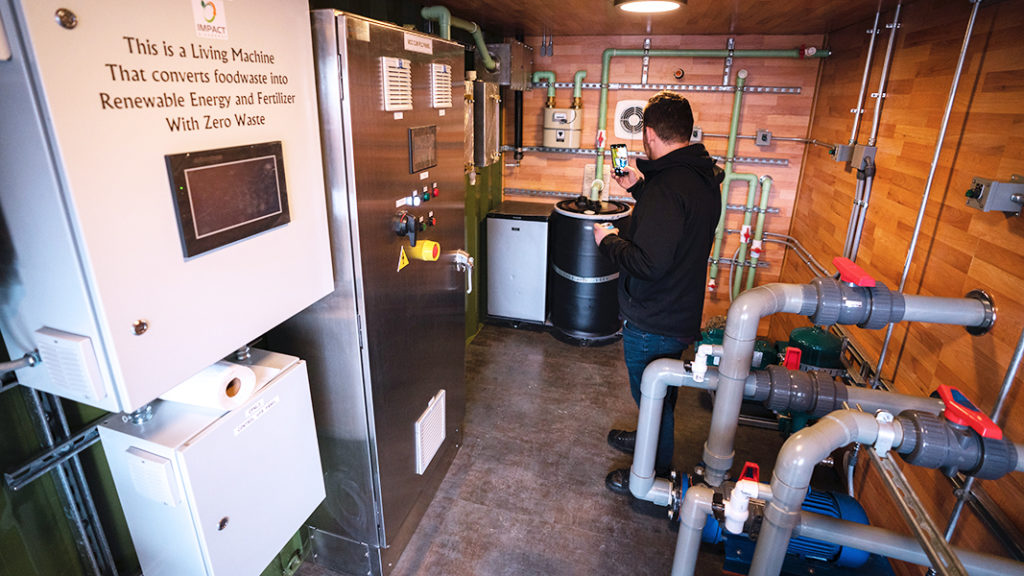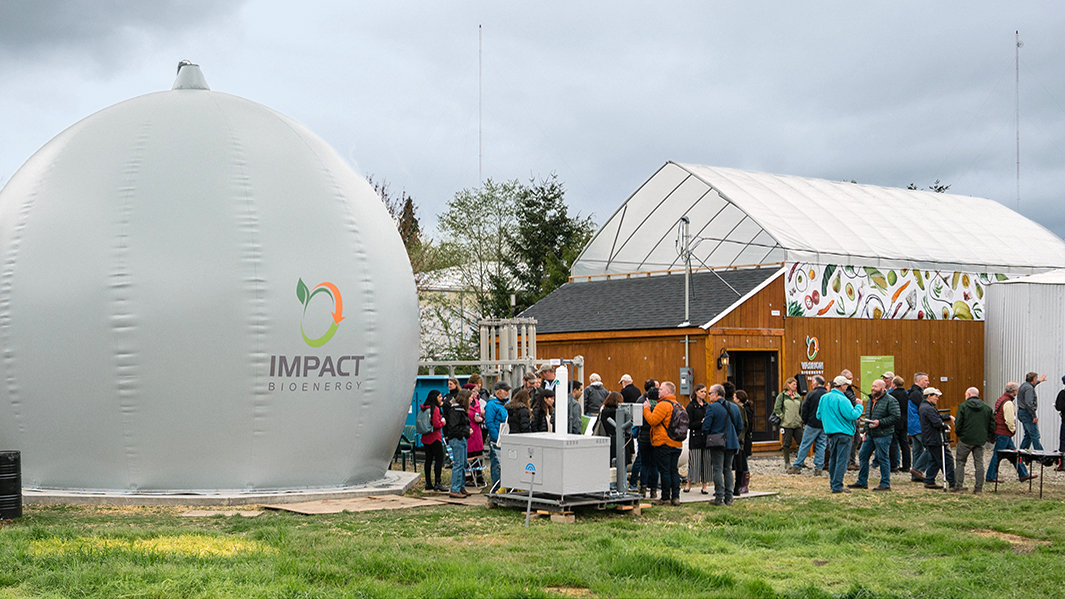Nora Goldstein
Editor’s Note: This article is excerpted from content in a May 2020 report, Washington State Food Waste Management Evaluation, prepared by Cascadia Consulting Group, Inc., with support from Franklin Associates, a division of ERG.
Washington state passed a law in 2019 (ESHB 1114) that established a goal of reducing food waste in the state by 50 percent of 2015 levels by 2030. Under the law, the Washington State Department of Ecology (Ecology) is directed to develop a food waste prevention plan. The plan includes three general strategies:
- Strategy 1: Prevent and reduce the amount of edible food wasted by residents and businesses;
- Strategy 2: Help match and support the capacity for edible food that would otherwise be wasted with food banks and other distributors that will ensure the food reaches those who need it; and
- Strategy 3: Support productive uses of inedible food materials, including using it for animal feed, energy production through anaerobic digestion, or other commercial uses, and for off-site or on-site management systems including composting, vermicomposting, or other biological systems.

Spent distillery grains. Photo courtesy of County Seat Spirits
The Washington State Department of Commerce contracted with Cascadia Consulting Group, Inc. (Cascadia) in January 2020 to create a snapshot of the quantity and types of food flowing through Washington state’s hunger relief, animal feed, composting, and industrial uses systems and describe the capacity of these systems to manage more material in the future, as a preferable alternative to landfill. Cascadia’s report, Washington State Food Waste Management Evaluation, was released on May 29, 2020.
Based on secondary data collection, literature reviews, and extrapolation of datasets, Cascadia estimates that Washington state generates 2.7 million tons of food waste. Of this amount, 1.7 million tons are recovered by hunger relief organizations, animal feed distributors and direct recipients, composting facilities, and anaerobic digesters. The remaining 1.0 million tons go to landfill (96%) and controlled combustion (4%).
Food Recovery
While providing the essential service of feeding hungry people, Washington state’s hunger relief system also prevented 49,802 tons of food from entering food waste management pathways in 2019. Understanding the capacity of hunger relief organizations to handle a potential increase in donated food is important to understanding the capacity of the state’s food waste management system. Of the 49,082 tons of food donations managed by Washington hunger relief organizations in 2019, approximately 54% was from grocery retail donors, 13% was from manufacturers and processors, 20% was from restaurants, institutions, and other commercial kitchens, and 13% was from farms.
In the report, Cascadia recommends a number of strategies to facilitate consistent, ongoing tracking of the quantity and quality of potentially wasted food being donated to hunger relief organizations in support of ESHB 1114. The report notes that there is very limited understanding of how much food received by hunger relief organizations ends up going to waste, either because food was donated in an unusable state or because logistics or management processes within the hunger relief system resulted in waste. Measuring quantities of food waste in the hunger relief system is an important step that would shine a light on donation dumping by donors, increase understanding of whether there are categories of food that are difficult to work with or that are donated in excess, and improve our understanding of other drivers of food waste within hunger relief organizations.
Another recommendation is to continue to measure edible portions of disposed food in statewide characterization studies. Ecology commissioned Cascadia to conduct a statewide MSW characterization study in 2009 and 2015 and has enlisted them to conduct another study in 2020. In the 2015 study, the material categories were updated to support data collection for food waste reduction and management; the categories distinguish between edible and inedible food items to assess donation potential. These categories will be carried forward into the 2020 waste characterization study.
Animal Feed Capacity

Food waste being loaded into on-site anaerobic digester. Photo courtesy of Impact Bioenergy
Washington state has 136 licensed commercial feed distributors that distribute feed in ingredient categories that meet this evaluation’s definition of food waste. Included in the definition are by-products from brewers and distillers, human food by-products, animal products, and screenings. Except for human food by-products, all these ingredient categories appear to consist only of food processing waste. The human food by-products category, according to the Washington State Department of Agriculture (WSDA) definition, also includes some types of food processing waste, as well as “restaurant food waste” and “recovered retail food” (WSDA, 2018). Six commercial feed companies are licensed to distribute feed containing human food by-products in Washington state.
Between July 2018 and June 2019, licensed commercial feed companies distributed 1,494,807 tons of food waste as ingredients for feed. The vast majority of this amount (92% or about 1.4 million tons) was distillery waste, with small percentages composed of brewery waste, animal products, human food by-products, and screenings. The main source of food waste for animal feed is the food manufacturing sector, including distilleries and breweries, which contributed 1,442,380 tons of food waste to commercial feed companies (96.5% of the total) in 2018-2019.
Composting Facilities
Three main types of composting facilities accept and process food waste in Washington state: permitted commercial facilities, permitted on-site composting facilities, and permit-exempt small-scale composters. Composting facilities accepting food waste as a feedstock are not required to have solid waste permits if they have “no more than 250 cubic yards of material on-site at any one time, not to exceed 1,000 cubic yards in a calendar year.”
In 2018, permitted composting facilities processed 187,977 tons of food waste. Of this amount, 159,574 tons (85%) came from within Washington state. The in-state food waste tons are 24% lower than 2017, when permitted composting facilities processed an estimated 210,865 tons of food waste; this difference appears to be largely due to a decrease in food waste feedstocks at two facilities.
Overall, Cascadia’s research shows that the amount of food waste entering composting facilities in Washington state is still dwarfed by the amount entering landfills and waste-to-energy. There is six times more food waste entering landfill and waste-to-energy from mixed municipal solid waste streams than there is being composted.
Other findings include:
Facility Capacity: Of the 65 permitted composting facilities in the state, 22 of them (34%) accept and process food waste, including 8 on-site facilities at universities and correctional centers and 14 commercial facilities. Those 22 facilities processed 46.5% of the total food waste feedstocks received by permitted composting facilities in Washington state. Most food waste feedstocks came from consumer-facing businesses (52.4%), followed by manufacturers (31.2%) and residences (16.4%).
Cascadia surveyed composting facilities as part of its research for this report. Seven out of eight composter survey respondents indicated that their facilities are currently operating below capacity and could process more food waste than they do now. Seasonal ebbs and flows make understanding overall capacity challenging. Although there may be overall capacity among some composters to accept more food waste, projections indicate that it will fill up quickly, and actual available capacity can be dynamic.
Despite this, if food waste generation is not substantially prevented — the primary focus of Ecology’s plan — the supply of food waste feedstocks will grow as streams continue to shift from landfill to composting, making additional permitted capacity at composting facilities critical in the coming years. According to a 2019 projection (Cascadia Consulting Group, 2019), organics generation for the region including King and Snohomish Counties is projected to increase 29% from 2019 levels by 2030 and 36% by 2040, based solely on current per-person generation of organics and available population growth projections.
Contamination: Contamination is a persistent issue for composters. Of the material collected for organics processing in King County in 2018, 3.9% by weight was contamination (Cascadia Consulting Group, 2019). This contamination included noncompostable plastic, glass, and noncompostable papers, such as aseptic and polycoated papers. While 3.9% is a low amount by weight, it is noticeable visually in finished compost and impacts customer perceptions and available markets.
The Washington State Department of Transportation (WSDOT), a major compost buyer in Washington, has variable demand for compost based on the number of road projects in the state. Since 2015, its demand has substantially decreased and shifted to finer compost to minimize contamination, since compost contamination on roadways can be considered litter (Maurer, 2020; Batjiaka, 2016).
Markets: Most of Washington’s compost is produced in the western part of the state, which presents challenges for markets in eastern Washington. The top ten (in terms of size) facilities, which are mainly in western Washington, produce 80% of finished compost (Waste 2 Resources, 2016; WA Department of Ecology, 2020). Agricultural markets and public projects in both western and eastern Washington could absorb more compost; agriculture only makes up five percent of the demand for compost in Washington state. The lack of composting facilities in eastern Washington, concerns over transport of raw organics possibly containing the destructive apple maggot from infested areas into pest-free agricultural zones for composting, the high costs of transporting compost from western to eastern Washington, and the difficulty of marketing in non-local areas may be prohibitive for eastern Washington markets to be adequately reached.

Control room for on-site AD facility. Photo courtesy of Impact Bioenergy
Anaerobic Digestion
The report categorizes anaerobic digestion as an industrial use (per the U.S. EPA food recovery hierarchy). The three main types of anaerobic digesters in Washington state are on-farm, water resource recovery facility (WRRF), and smaller, on-site digesters. (Ecology’s draft plan recommends utilization of two WRRFs in western Washington to receive food waste.) While there are five active on-farm anaerobic digesters in Washington state that process preconsumer food waste (out of nine total dairy digesters), only two were operating as of the writing of this report; the other three are undergoing facility repairs. There are also four small-scale, on-site anaerobic digesters operated by Impact Bioenergy at a brewery, cidery and farm, commercial kitchen, and tofu producer. These are permit-exempt digesters — below a threshold of 5,000 gallons or 25 cubic yards of material on-site at any one time — built to process materials generated at each site. In total, anaerobic digesters processed approximately 5,765 tons of preconsumer food waste in 2017.
On-farm anaerobic digesters generally process 50% or more animal manure and up to 30% preconsumer food waste not collected via a solid waste collection program. These digesters must submit reports to Ecology that include type and quantity of feedstocks and a digestate analysis but do not require solid waste permits. As of the writing of this report (Spring 2020), one on-farm digester was applying for a solid waste permit in order to process a higher percentage and greater diversity of food waste feedstocks.













